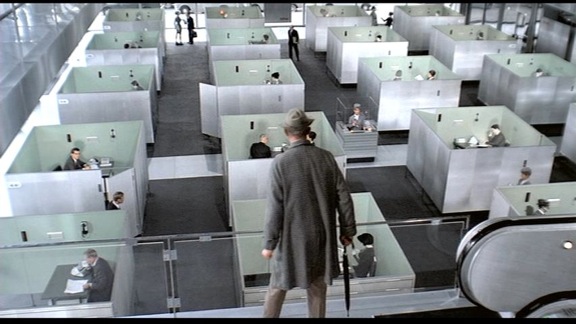



In his essay "From Sun Tzu to XBox: war and video games", Halter describes the development of technology which has allowed wars which were once disastrously intimate, messy, passionate affairs to be fought from a greater distance and with almost no personal interaction. The innovative Igloo White project of the war in Vietnam had airplanes dropping disguised electronic spies which recorded signs of life and translated the targets in the form of tiny "worms" on a screen, where they could then be shot at or blown up without ever knowing who or what was being demolished. This was understood as a clean and safe way of waging war. The concept of reducing people to dots on a screen or in the case of THX 1138, numbers as opposed to individuals, is illustrated in George Lucas's 1971 debut feature film. The movie depicts an underground, sterile, world run by robots, where emotions and sexual acts are outlawed and suffocated by regular mandatory drug intake. Halter describes the white passionless, robotic world of this movie as voicing the growing concerns with the direction in which technological advances were headed.
I believe the comparison is quite sound. THX 1138, the protagonist of this cult classic film, is given a number instead of name, and works at a factory where he assembles the very robotic beings that police his life completely. The fear of creating a weapon that would then turn itself on the creator is a frightening reality in electronic warfare development. It is frightening when something as serious and devastating as war becomes as removed and casual as reading a computer screen and pressing some buttons. While the advancements of weapons during war time led to the technology that created video games it is no surprise that war has becomes more like a video game for those participants lucky enough to have the technology.
Trailer -> http://www.imdb.com/video/screenplay/vi3864002585/

No comments:
Post a Comment